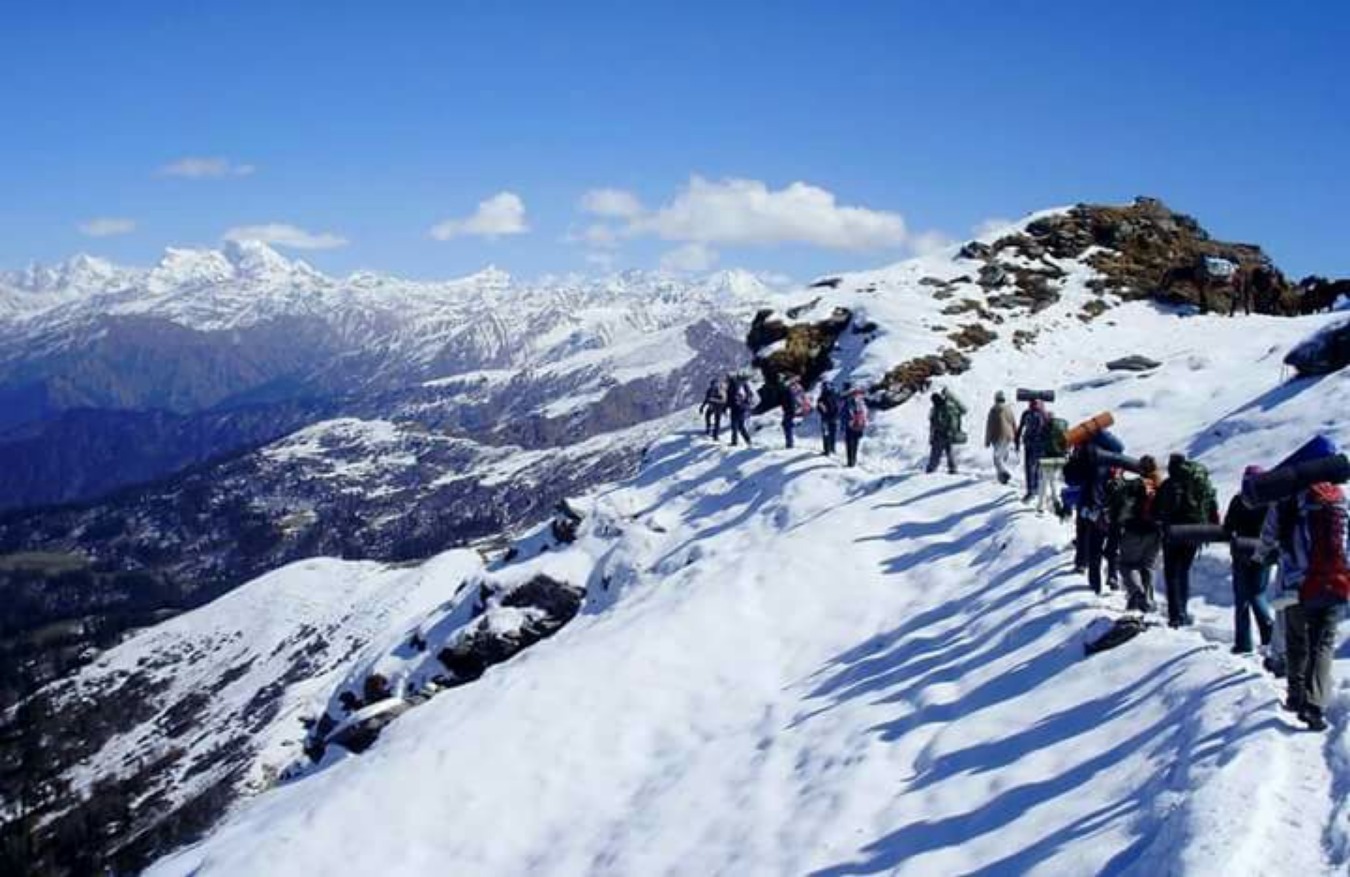Trekking to Tungnath: Explore the Enchanting Beauty of Chopta
The Chopta Tungnath trek in the Garhwali region of the Himalayas is a one-of-a-kind adventure, though unfortunately, you can hardly find accurate information about it online. This is what inspired me to write this guide, having hiked the trail myself. Here, I’d provide you with some handy and reliable tips to navigate this beautiful trail in the lap of the mighty Himalayas, complete with what to do to prepare for it, how to navigate it, how challenging it can be, some fun facts about the trek, and other information that might be useful if you’re planning to head here.
So, lace up your hiking boots and accompany me on this step-by-step guide to the Chopta Tungnath hiking trail, where I’ll guide you step-by-step, from essential tips to hidden gems along the trail. By the end of this article, you’ll not only be equipped with all the practical insights for the trek but also be inspired to embark on this adventure of a lifetime!
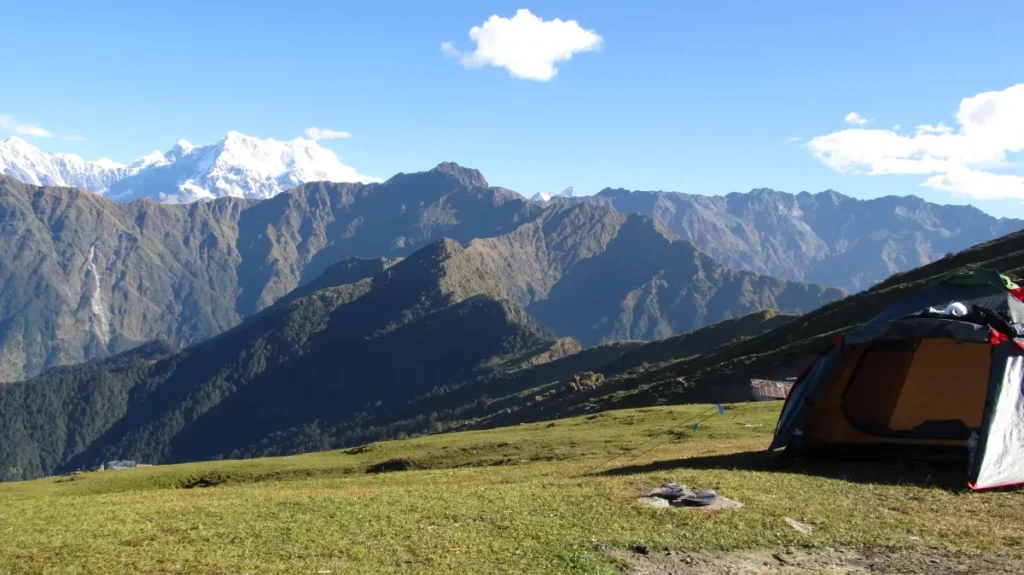
How Difficult Is It?
The Tungnath trek, known for its easy-to-moderate difficulty, is perfect for beginners to high-altitude hiking. With well-marked, maintained paths, it’s challenging mainly due to its steep climbs and high altitude. Suitable for anyone who can walk a few hours, but take care on the Sari to Chopta stretch, as it’s tough and long
I personally struggled on the Sari to Chopta section, which can be challenging and covers a considerable distance. If you’re not a frequent trekker or in great physical condition, starting from Chopta might be a more manageable option for you.
Factors That Determine the Difficulty of the Trek
1. Length and Duration
The Chopta Tungnath Trek is relatively short, spanning about 10 kilometers (round trip). Most trekkers complete it within a day, though some may choose to camp at Chopta or nearby villages for an extended experience. For beginners, the trek’s short length and well-defined trails make it manageable.
For those opting for the Chopta Chandrashila Trek from Delhi, the journey becomes longer due to travel time, as Delhi is about 400 kilometers from Chopta. Organized Chopta tour packages often include travel arrangements, reducing logistical stress.
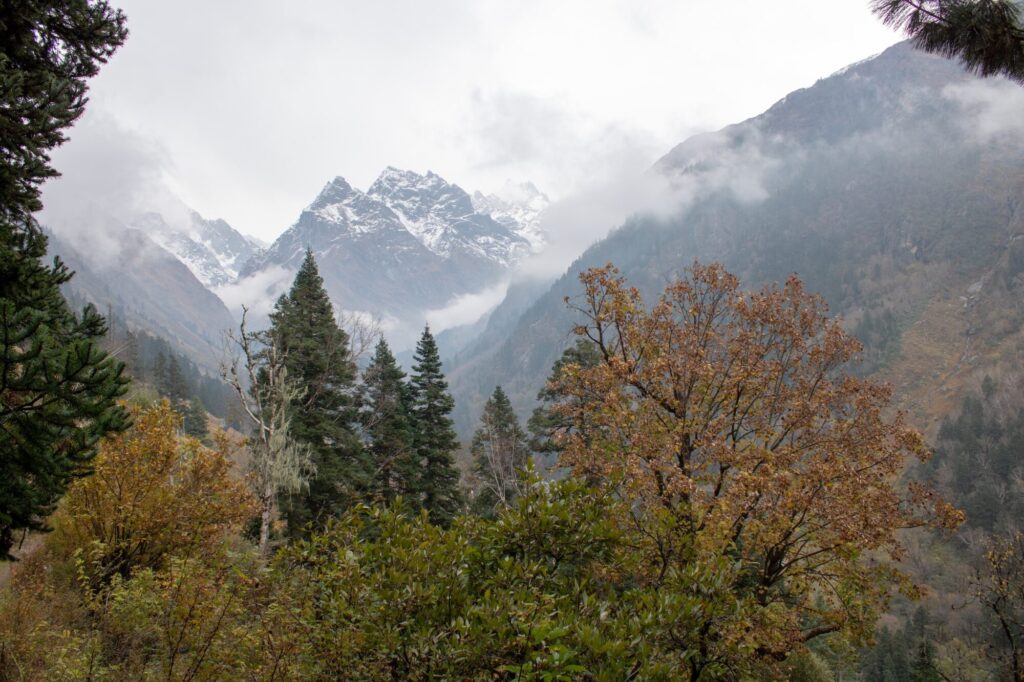
2. Elevation and Altitude
The trek starts at Chopta, situated at around 2,600 meters, and ascends to Tungnath at 3,680 meters before reaching Chandrashila at 4,000 meters. This gradual elevation gain minimizes the risk of altitude sickness for most trekkers.
However, altitude changes can still pose challenges, particularly for individuals who are not acclimatized. If you’re trekking as part of a Chopta Chandrashila Trek from Delhi, it’s advisable to rest at Chopta for a night to adjust to the altitude before starting the trek.
3. Weather Conditions
Weather is a significant factor that impacts the difficulty of the Chopta Tungnath Trek. During the summer months (April to June), the trail is clear, the weather is pleasant, and the trek is easier.
However, trekking in the winter months (November to February) can be more challenging due to snow-covered trails and freezing temperatures. Snow can make the path slippery, particularly during the ascent to the Chandrashila summit trek, requiring extra caution and appropriate gear.
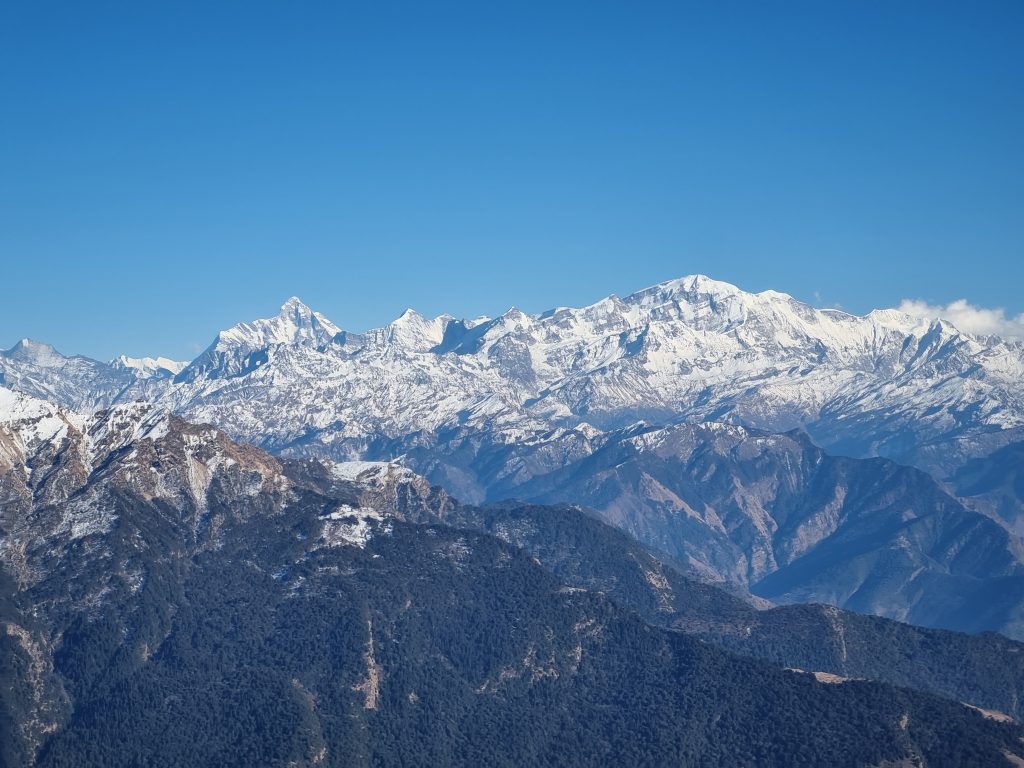
4. Trail Terrain
The trail is well-marked and maintained, making navigation straightforward. The path from Chopta to Tungnath consists of a gradual ascent on a stone-paved trail. From Tungnath to Chandrashila, the terrain becomes steeper and narrower, requiring more effort.
For first-timers, the stretch to Chandrashila can feel slightly strenuous due to its steep gradient. However, the panoramic views from the summit make every step worth it.
Who Can Attempt the Chopta Tungnath Trek?
The Tungnath Temple Trek is suitable for individuals with basic fitness levels. Here’s a breakdown:
- Beginners: The trek’s short length and gradual ascent make it ideal for first-time trekkers.
- Families and Kids: Families with children (above 8 years) often find this trek doable and enjoyable.
- Experienced Trekkers: For seasoned trekkers, the Chopta Chandrashila Trek offers a chance to witness unparalleled Himalayan beauty while serving as a quick getaway.
If you’re planning a Chopta Tungnath Trek from Delhi, opting for curated Chopta tour package can simplify the journey by providing transport, accommodation, and trekking guides.
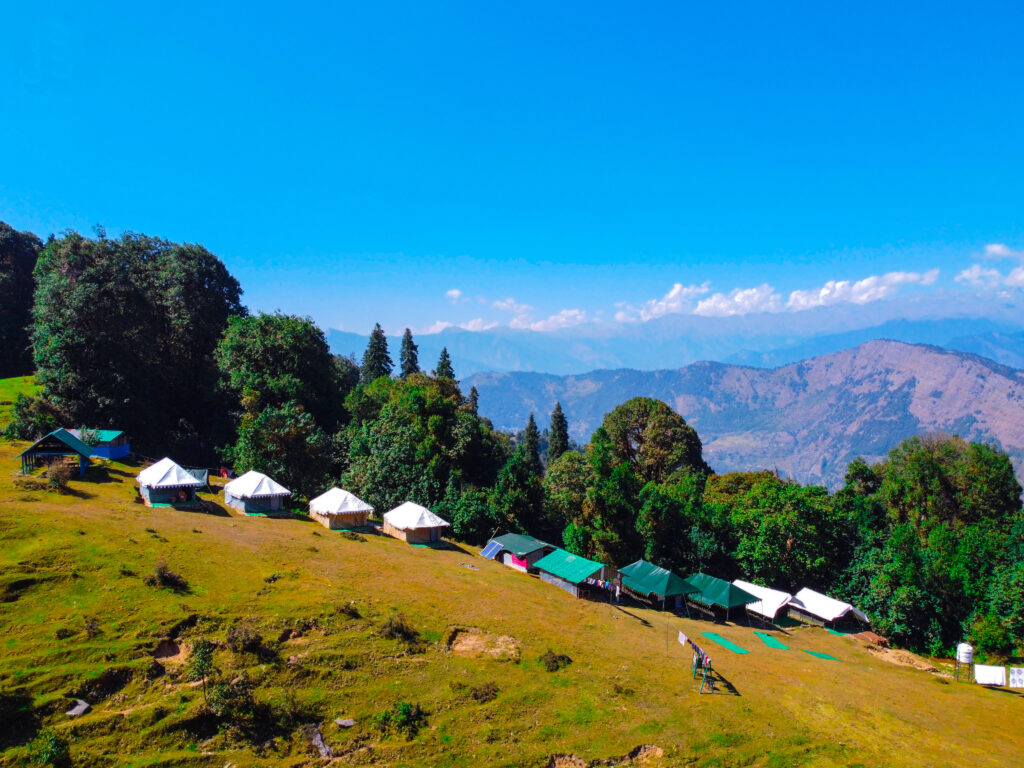
Seasonal Challenges of the Chopta Tungnath Trek
Summer (April to June)
- Difficulty: Easy
- Highlights: Clear skies, blooming rhododendrons, and comfortable weather.
- Challenges: Crowds during peak season.
Monsoon (July to September)
- Difficulty: Moderate
- Highlights: Lush greenery and misty landscapes.
- Challenges: Slippery trails and unpredictable rain.
Autumn (October to November)
- Difficulty: Easy to Moderate
- Highlights: Crisp air and unobstructed views of the Himalayan peaks.
- Challenges: Cooler temperatures, especially in the evenings.
Winter (December to February)
Challenges: Freezing temperatures and slippery, icy paths.
Difficulty: Moderate to Hard
Highlights: Snow-covered trails and a magical winter wonderland.
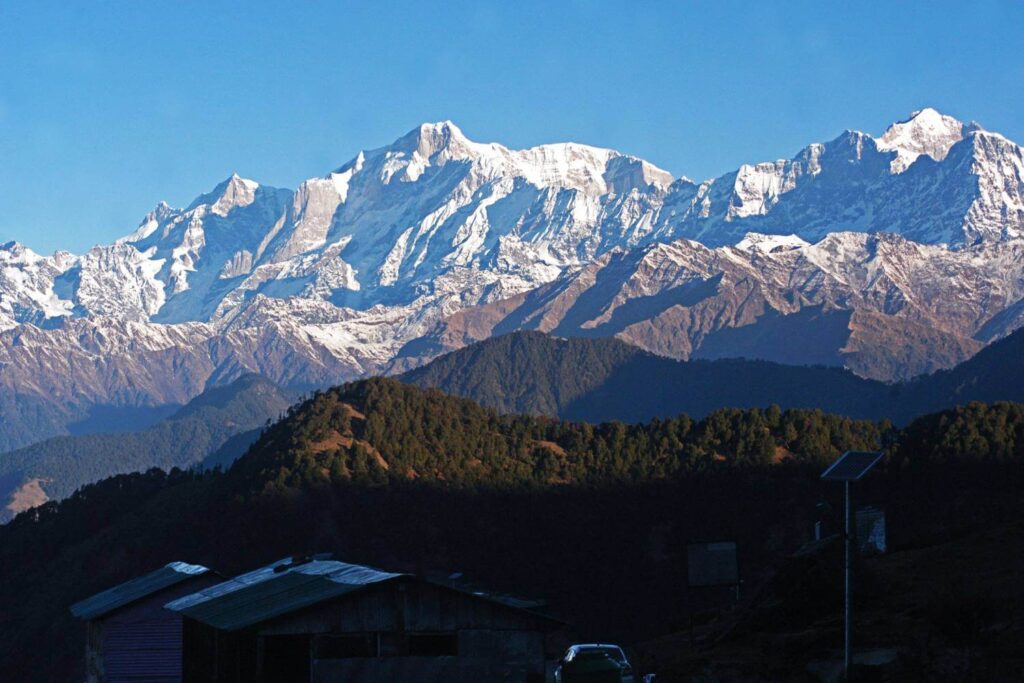
Trekking Essentials
Prioritize thorough preparation for the trek, as the route, while popular, is quite remote. Ensure that you pack all the necessary essentials for a smooth journey. Learning from my own experience, inadequate preparation led to many hassles that could have been avoided, further reminding me of the importance of being well-equipped. Additionally, be mindful of the temperatures, especially at Tungnath, where it can get quite cold even in the day. Equip yourself with the right gear and essentials to make the most of your trekking adventure, all the while staying comfortable and prepared for varying conditions.
Don’t forget to bring:
- Two to three warm sweaters
- Ear warmers/woolen headband
- One warm jacket
- One warm pants
- Three warm thick socks
- One pair of very sturdy shoes (made that mistake once, thank me later)
- One or two good quality power banks (there is no electricity throughout the route)
- Wet wipes – often there’s no availability of hot showers
- Sufficient amount of cash – there are no ATM’s nearby, and you’d need it
- Head torch
- Snacks and water to last you the route
- Gloves
If you’re planning to climb up to Chandrashila Summit, you should consider bringing clamp-ons, micro spikes and gaiters. This is in case that there is snow or ice on the trail. If you’re unexperienced with such situations and don’t have an experienced guide with you, I strongly advise against going here.
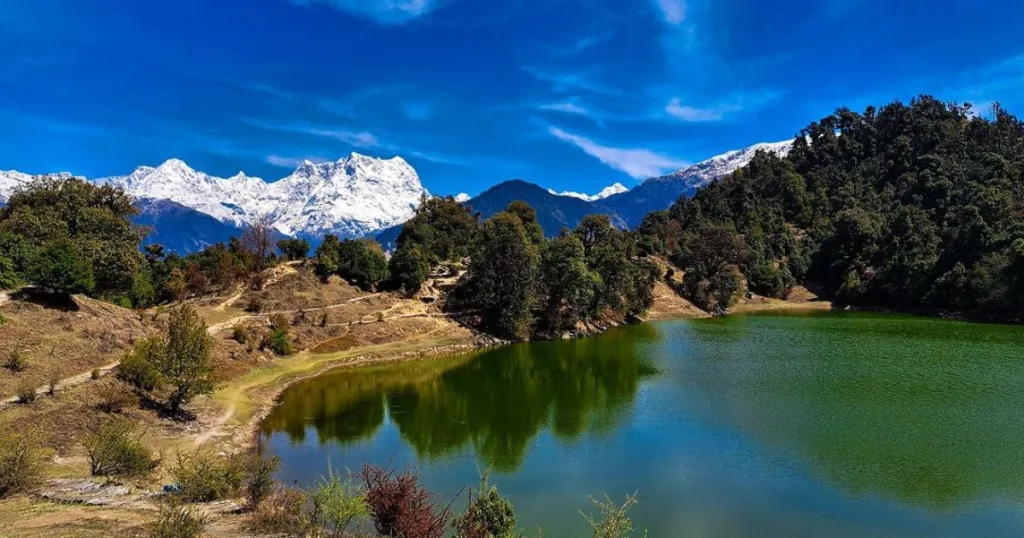
Do I Need A Guide?
Do I Need a Guide for the Chandrashila Trek?
When planning the Chandrashila Trek, a common question arises: “Do I really need a guide for this journey?” While the trek is relatively straightforward, hiring a guide can significantly enhance your experience, especially if you’re embarking on the Chopta Tungnath Trek from Delhi or exploring it for the first time. Let’s weigh the pros and cons to help you decide.
The Case for Hiring a Guide
- Expert Navigation
The trails of the Chopta Chandrashila Trek are generally well-marked, but weather changes or snowfall can obscure the path, especially during winter treks. A local guide familiar with the terrain ensures you stay on track, particularly during the steeper sections of the Chandrashila Summit Trek. - Cultural and Historical Insights
A guide can enrich your journey by sharing fascinating stories about the Tungnath Temple Trek and the legends of Chandrashila. For example, many guides narrate the mythological significance of Tungnath, the world’s highest Shiva temple, and the meditative stories associated with Chandrashila. - Safety First
Safety is paramount, particularly if you’re tackling the trek during challenging weather. Guides are well-trained in first aid and are prepared for emergencies. For trekkers coming as part of a Tungnath Chandrashila Trek from Delhi, having a guide ensures a worry-free adventure. - Support for Beginners
If you’re new to trekking, hiring a guide is highly recommended. They can pace your journey, suggest the best spots to rest, and ensure you complete the trek comfortably. This is especially helpful for families or groups booking Chopta tour package for the first time.

When You Might Not Need a Guide
- Experience Level
If you’re an experienced trekker familiar with high-altitude trekking and navigation, you may feel confident undertaking the Chopta Tungnath Trek independently. - Well-Prepared Plans
If you’ve thoroughly researched the trek, understand the route, and are equipped with maps or GPS, you might not require a guide. Many Chopta Chandrashila Trek from Delhi packages offer pre-planned itineraries with detailed route maps. - Group Travel
Traveling in a group reduces the need for a guide, as there’s collective experience and support. However, even in groups, a guide can add value with their expertise.
Advantages of Guided Trekking Packages
Opting for guided trekking options such as Chopta tour packages offers a seamless experience. These packages often include:
- Travel arrangements from Delhi to Chopta and back.
- Accommodation in Chopta, ensuring a comfortable stay.
- A professional guide for the Tungnath Temple Trek and Chandrashila Summit Trek.
These packages are especially beneficial for trekkers who want to focus solely on enjoying the journey without worrying about logistics.
Where To Stay in Sari & Food Options
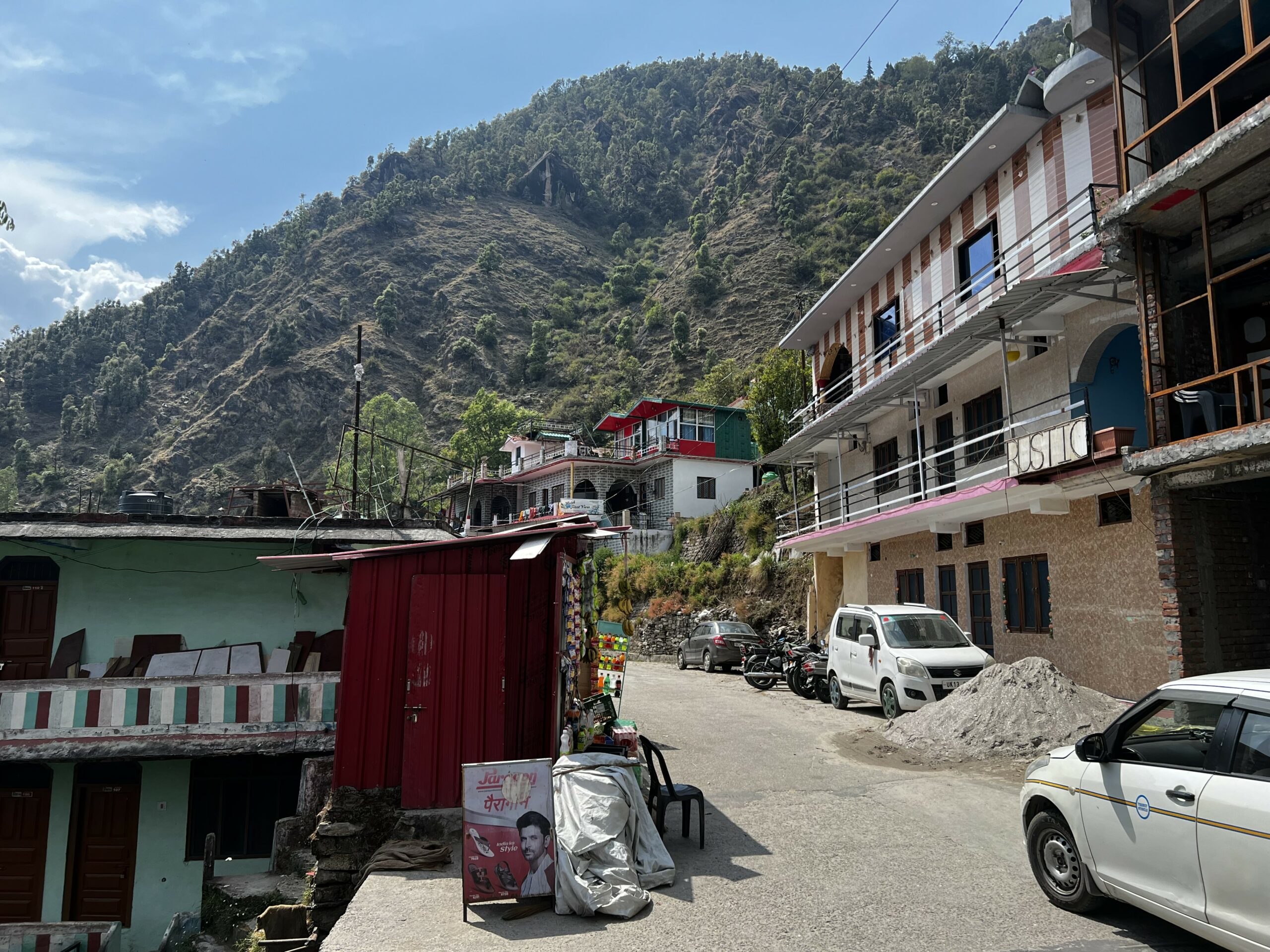
Sari Village
In Sari Village, accommodation options include homestays, guesthouses, and a limited number of budget hotels. Given the remote and less touristy nature of this settlement, expect basic facilities. For a convenient starting point, consider trekking to Deoriatal and spending the night in one of the guesthouses along the trail. Since these places cannot be booked online, the traditional method of in-person inquiry is recommended. Along the trail, there are four stalls, some of which offer accommodation.
During my trek, our group of four stayed at one such stall, with basic rooms without amenities like showers or heaters. The cost was about INR 350 per person with some room for negotiation—a common practice in these areas. Prices may vary based on the time of your visit.
While Sari Village has a few restaurants, options are limited, though I still recommend having lunch here. Additionally, purchase snacks and water here, as prices double once you hit the trail. The lack of a road leading to the shops means that all products are transported by porters or donkeys, impacting prices.
Sari to Deoriatal Trek
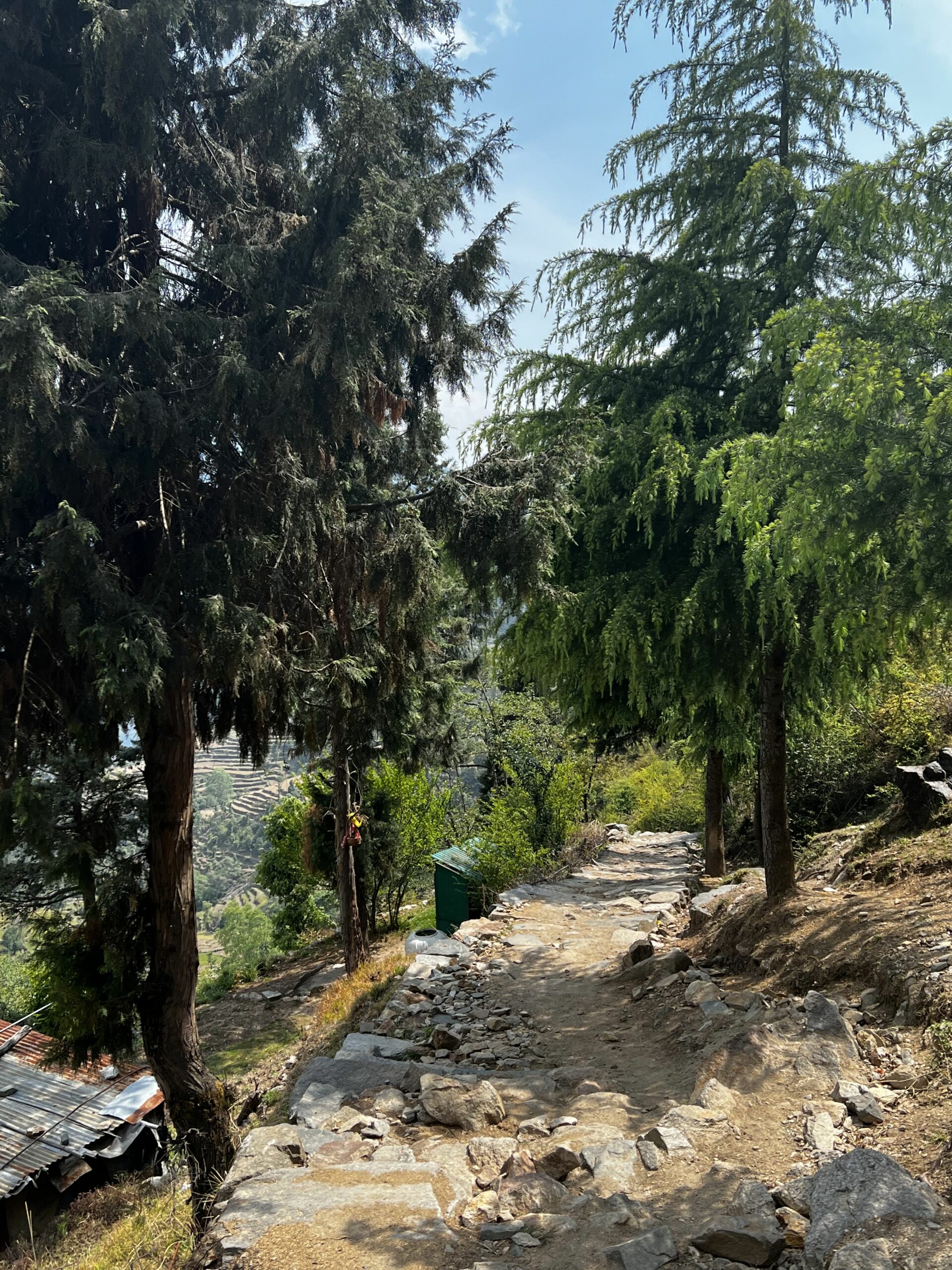
The trek from Sari (2,000m) to Deoriatal (2,300m) is a modest 2.5 kilometers. Despite its short length, it can be a considerable challenge due to its steep ascent, taking about one and a half hours to complete. The well-marked path ensures a secure journey, with beautiful views of Sari Village and the surrounding valley. Along the way, you’d encounter four stalls, any of which are perfect for a rest and a taste of the local Rhododendron juice known as ‘Buransh Ka Sherbat,’ typically priced at INR 50 per glass, if you’re visiting in the right season. These stalls also offer overnight accommodations.
The trail is beautiful. While trekking, you’ll pass through the Sari village and its charming old houses and you’ll get a complete open view of the valley. The trail is surrounded by old trees and it looks like some sort of a fairytale forest. We first thought that it would be possible to go straight from Sari to Chopta, but found out soon enough that this is impossible. The trail, even though it’s such a short distance, took more time than we expected, resulting in us walking in the dark. Don’t get overconfident if you ever find yourself in a similar situation – believe me wen I say that it’s always better to stay over and do the rest tomorrow.
Deoriatal to Chopta Trek
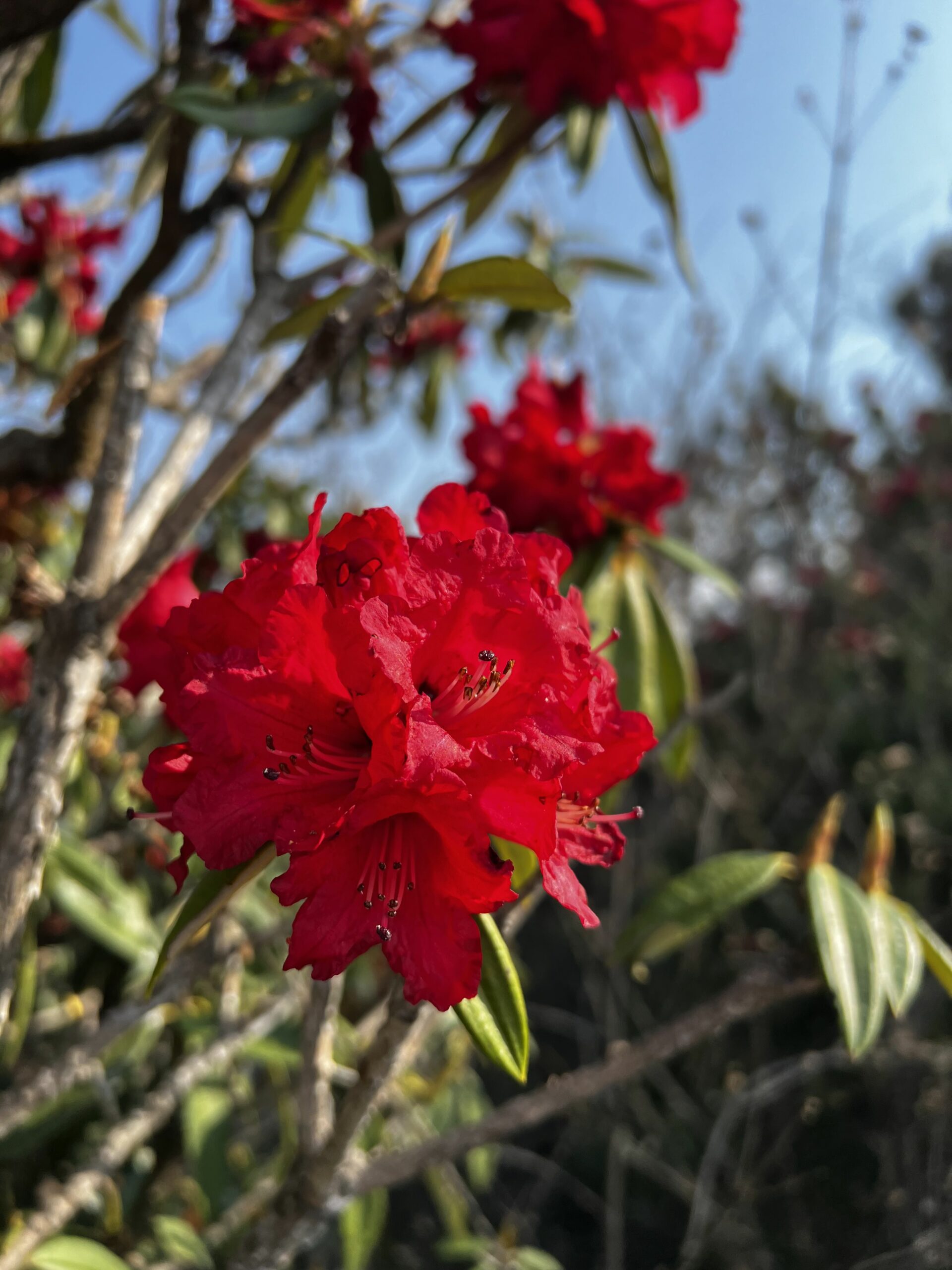
Enter the trek from Deoriatal (2,300m) to Chopta (2,600m), which could be similar to a challenging expedition. While a guide is recommended for this approximately 20-kilometer section lasting around six hours, it’s not mandatory. The trail’s length and its many steep sections contribute to its difficulty level. Preparation is key here – ensure that you have ample snacks, water, and packed lunch for this one, as there are no shops or food stalls along the entire route.
Beginning at the scenic Deoriatal lake, be prepared for a possible INR 200 entry fee for the national park, although we managed to avoid paying this as we left early in the morning and the rangers weren’t present at that time. The lake, surrounded by grass meadows and offering a stunning view of the snow-capped mountain range, sets the stage for the journey ahead.
The real challenge starts after the lake, as you continue your climb further up the mountain. You’d spot many different species of birds here, along with many species of flowers and plants. If you come between March until early May, you’d see thousands of Rhodondendron flowers filling the valley in all different colours. You’ll pass through forests, grass meadows, serene waterfalls, and much more. Another great thing about this trek is how peaceful and quiet it is – we didn’t encounter anyone else while we were on the trail – it’s certainly something you wouldn’t want to miss out on.
Getting to Chopta: Your Guide to Road Travel
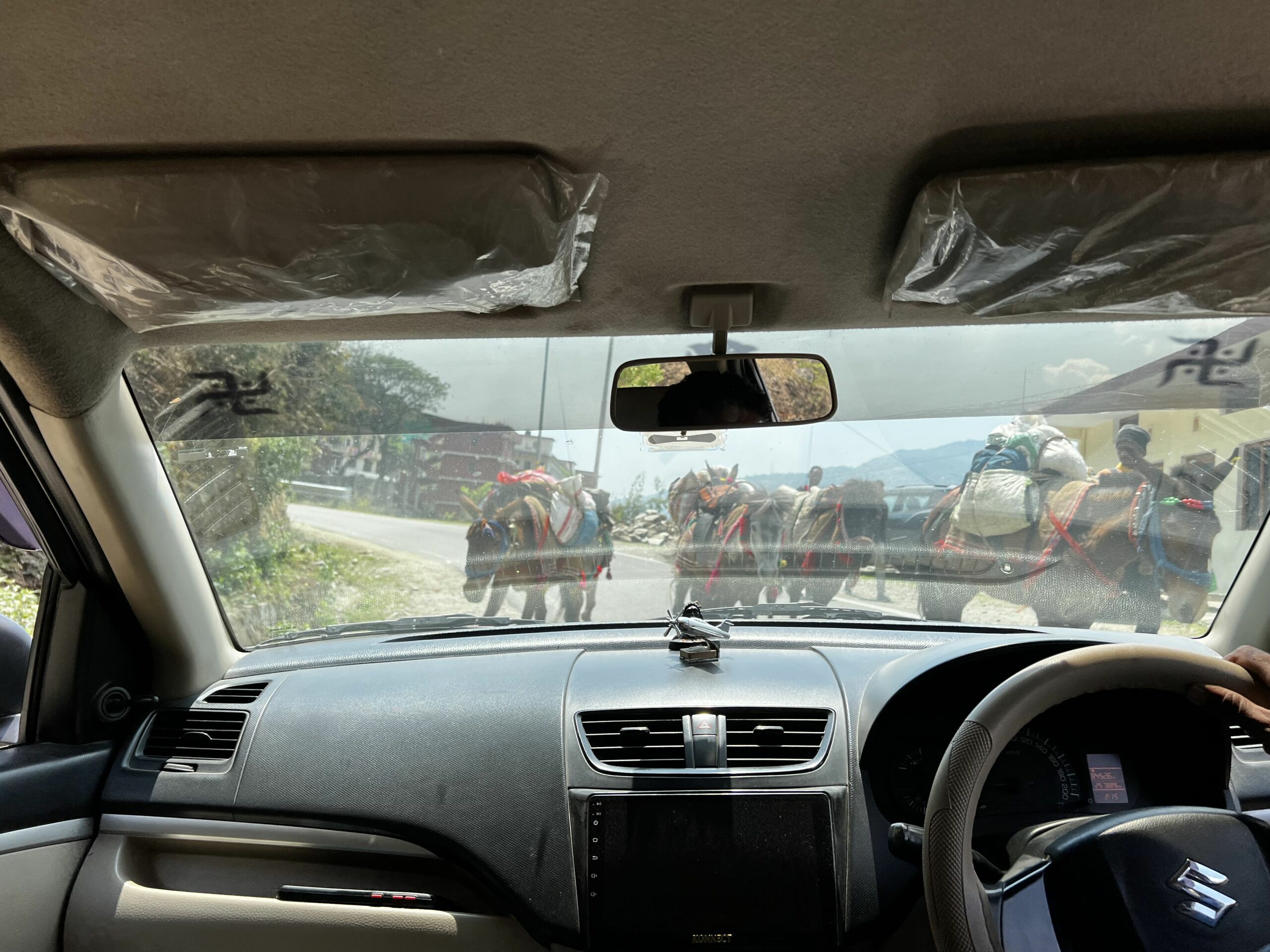
For those opting to bypass the trek from Sari to Chopta, a road connection is available. It can be reached by either public transport or taxi. If you choose to book a taxi, the route from Rishikesh to Chopta covers 200 kilometers in about six to seven hours. A round trip – including the two days of the trek – is about INR 10,000 ($120.13). Other than Rishikesh, Haridwar is another option for a starting point.
For budget-conscious travelers, buses are an alternative, though they are time-consuming and less reliable. Given the absence of direct buses to Chopta, opt for a bus departing from either Rishikesh or Haridwar, heading to Ukhimath. Upon reaching Ukhimath, finalize your journey with a taxi to Chopta.
To find out how much the bus costs, it’s best to check online through Redbus or go to the local bus station. Prices vary and so do the bus schedules.
Where To Stay in Chopta & Food Options
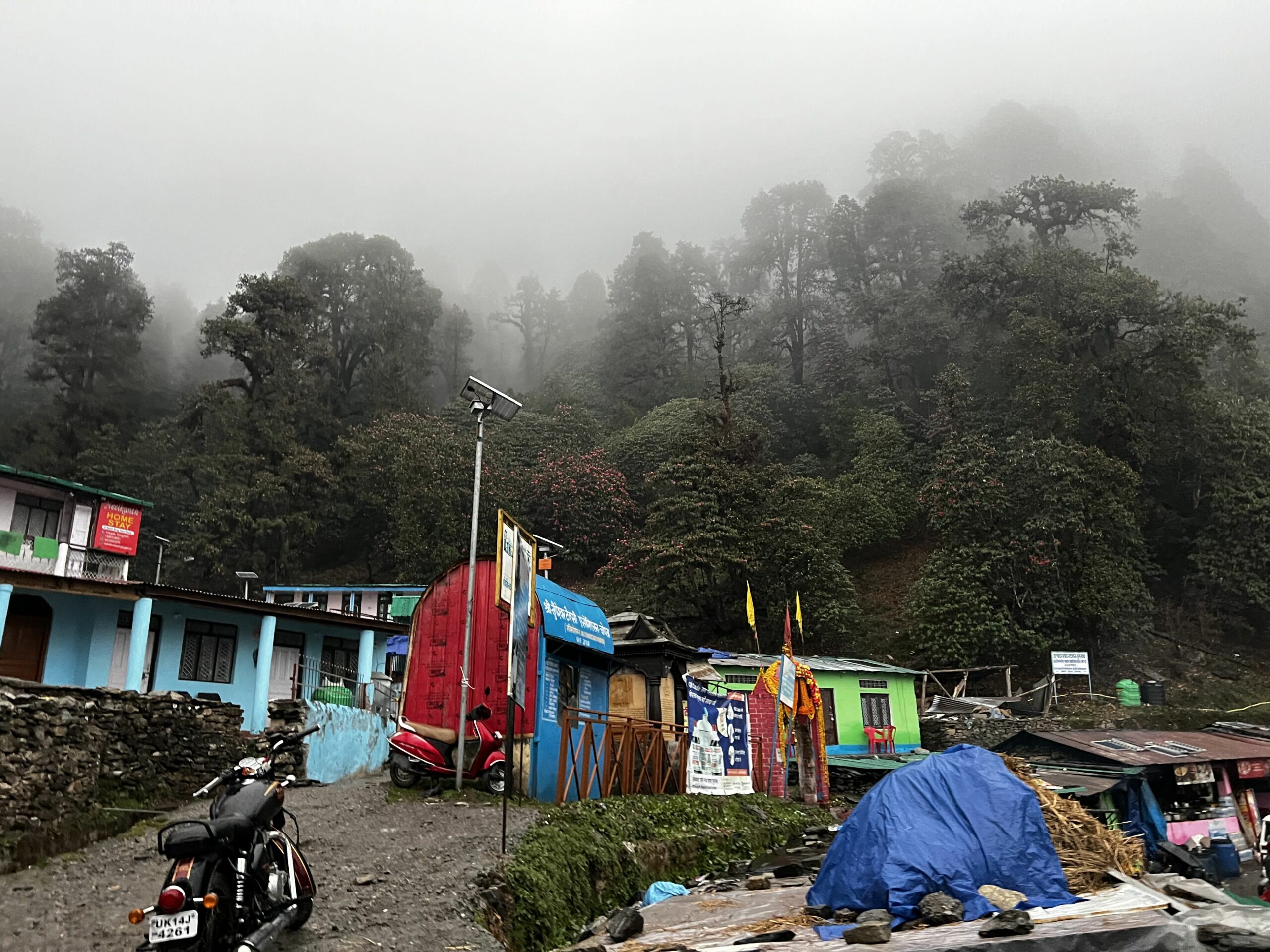
Similar to Sari, finding accommodations in Chopta online can be a challenge. Properties are typically discovered on-site, with a limited number of guesthouses offering basic facilities. Anticipate a no-frills experience without luxuries like hot showers. Our stay, priced at INR 500 each, was negotiable – bargaining is recommended for a better deal. Notably, Chopta operates without electricity and relies primarily on solar panels, so do keep this in mind and bring a power bank along.
There aren’t any fancy restaurants here either. You’d likely end up with Maggi (Indian instant noodles) at one of the many smaller shops. There was one restaurant in Chopta offering a range of curries and dishes, but that was about it.
Chopta to Tungnath
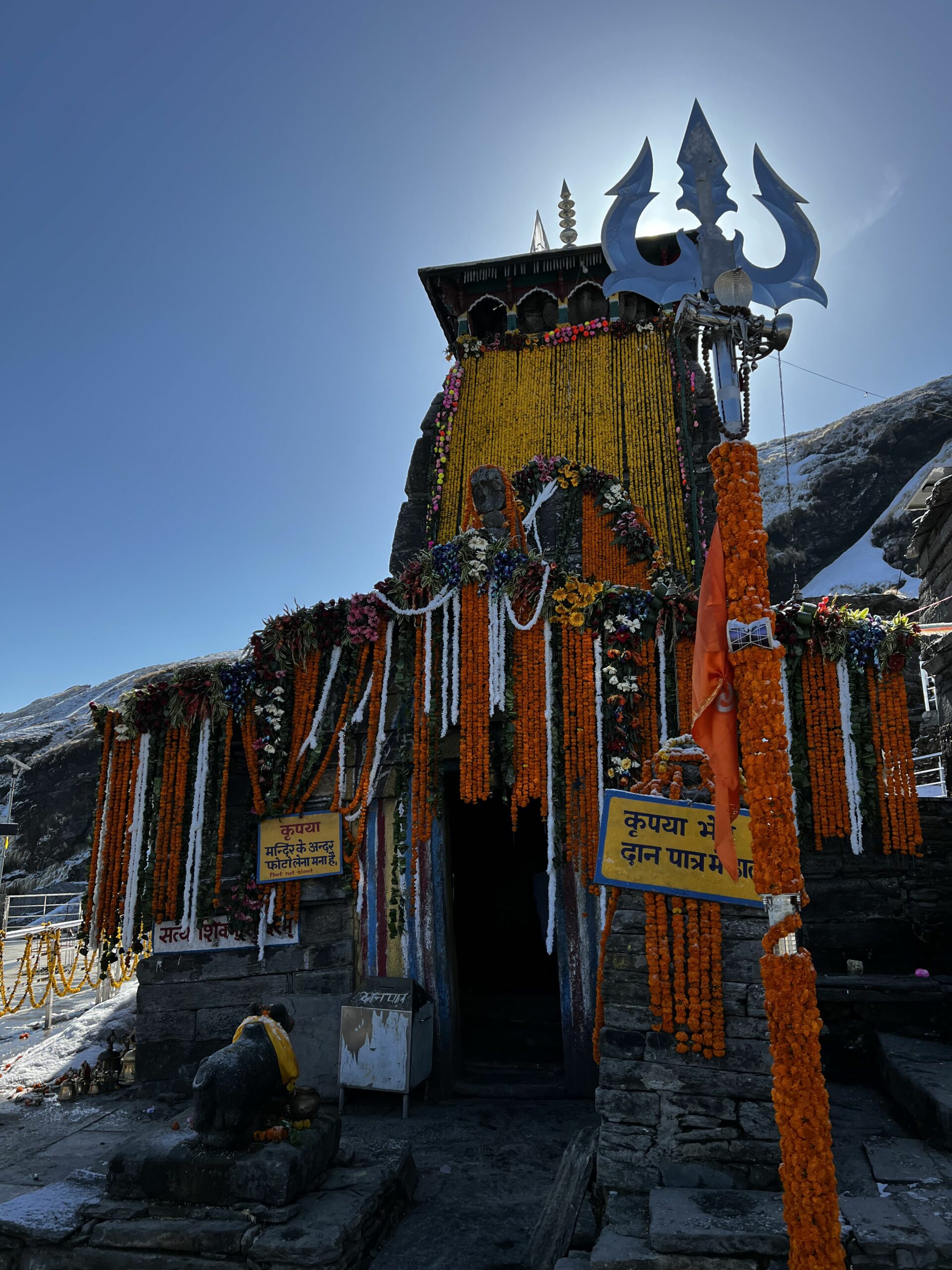
The trek from Chopta (2,600m) to Tungnath (3,690m) is simply breathtaking. You’re completely surrounded by huge Himalayan mountains and get a complete 360 view of the ranges. The trek is approximately five kilometres long and it will take around three hours to reach the Tungnath temple. You’ll gain 1000m in elevation in just five kilometres, so it’s quite steep at certain points. The trail is paved with stones and very easy to follow.
You can’t get lost, and hence don’t really need a guide for this part. On the way up, you can find a few shops and stalls where you can get chai, snacks and breakfast. The rate is significantly higher, though, as the products can only reach here by mules. We paid INR 140 for Maggi on the way, which you can normally get for INR 50. Don’t make the same mistake as me and ask whether they have an omelet, as it’s a holy place and hence completely vegetarian (eggs are considered non-vegetarian in India).
It’s important not to start the trek from Chopta to Tungnath in the dark, as it’s a national park and leopards and other wild animals are a persistent danger. We had read on the internet that it’s advised to leave around 3 AM, which ended in us getting chased by aggressive stray dogs. It was only later that we saw the board of the national park that warned us about hitting the trail at night. Do make sure that you leave early in the morning just before the sun rises, as this trail can get pretty crowded further in the day with people on horses getting carried to the top, and many pilgrims visiting the temple.
Make sure that you take off your shoes before entering the temple premises, just like any other temple in India.
At Tungnath, there are a few guesthouses if you’d like to spend the night here. It’s a great option if you’re planning to go to Chandrashila and want to see the sunrise from there, do note that your route to Chandrashila depends on a few things, like the weather and the current condition of the trail. I’d advise walking a bit ahead on the same day you reached Tungnath and see the condition of the trail – if it looks good or if you’re experienced in hiking on snow and ice, you can stay at Tungnath and see the sunrise from the Chandrashila peak the next morning, if you reach there early enough. If not, you can do it whenever you feel like, though you’d be missing out on the beautiful sunrise..
Fun fact: Tungnath literally translates to ‘Lord of the Peaks’ and is believed to be the highest Shiva temple in the world located at 3,690 meters above sea level.
Tugnath to Chandrashila
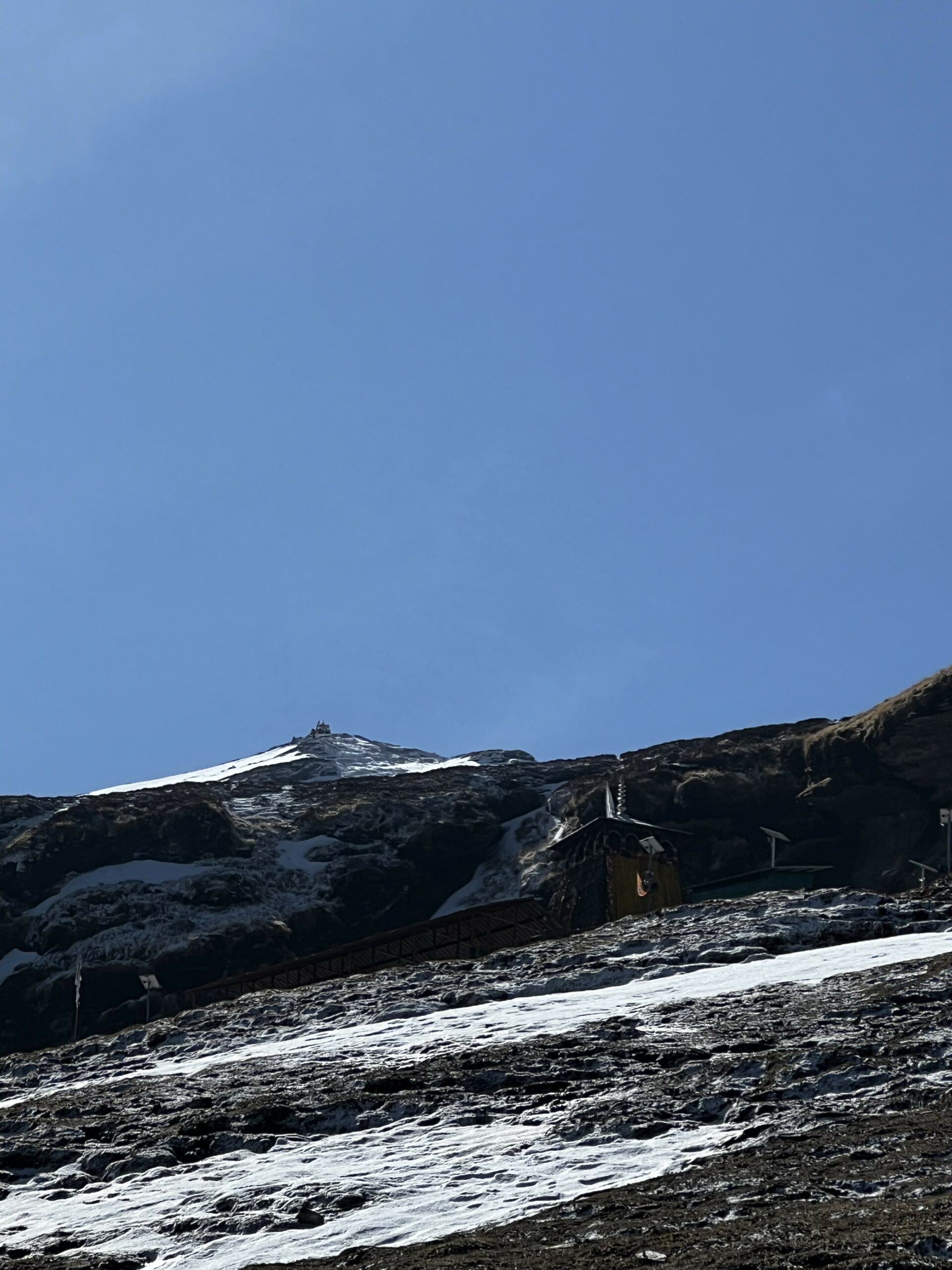
The last part of the trek, Tungnath (3,690m) to Chandrashila (4,000m) is the most difficult part of this whole journey. The distance between the two spots is about 1.5 kilometers and should take around one and a half hour. The path is quite steep with small steps on high altitude, which makes it a bit more challenging.
We couldn’t make it to Chandrashila as the steps were covered in ice and snow, making it incredibly dangerous at that time of the year (April). We tried at first, but when we encountered multiple other trekkers turning back in front of us and warning us about the trail, we turned back. You can only go ahead to Chandrashila if the path is clear or if you have the necessary equipment to walk in snow and ice, like clamp-ons, are experienced with walking in these conditions, or if you’re with an experienced guide.
There are some times in the year – like fall and early winter – when you wouldn’t find any ice on the way. While you can proceed without much worry about the trail, note that temperatures can still get quite unforgiving around those times, so remember to still be careful.
Fun Fact: Chandrashila Trek holds a fascinating mythological significance? According to ancient legends, this summit is where Lord Rama meditated after defeating Ravana. The name “Chandrashila,” meaning “Moon Rock,” is also believed to be associated with a story that the Moon God (Chandra) spent time here in penance.
I hope that this guide has provided you with valuable insights and practical tips for your upcoming trek to Tungnath and Chandrashila!
Learning from my own experiences, I now understand the importance of proper preparation to ensure a safe and enjoyable journey. I also hope that you don’t face the challenges I did, like unexpected financial hurdles, missing out on the Chandrashila summit, and almost navigating on the trail in the dark in the unseen company of wild animals. I wish you a safe and fulfilling journey to the highest Shiva temple in the world, along with the mystical summit of the Chandrashila Peak.
FAQs for Chopta Tungnath Trek
1. What is the Chopta Tungnath Trek?
The Chopta Tungnath Trek is a scenic and spiritual trek in Uttarakhand, leading to Tungnath, the world’s highest Shiva temple, and the Chandrashila Summit, which offers panoramic views of the Himalayan peaks.
2. What is the best time to visit Chopta Tungnath Trek?
The trek is ideal between April to June and September to November for pleasant weather. Winter months (December to February) offer snow trekking adventures.
3. How difficult is the Chopta Tungnath Trek?
The trek is considered moderate and suitable for beginners. It requires basic fitness, as the trails are steep in certain sections.
4. How long is the Chopta Tungnath Trek?
The trek is approximately 5 kilometers from Chopta to Tungnath Temple and an additional 1.5 kilometers to the Chandrashila Summit.
5. Do I need a guide for the trek?
While the trails are well-marked, hiring a guide is recommended for first-timers or during winter. Guides offer insights and ensure safety.
6. Can I do the Tungnath Chandrashila Trek from Delhi?
Yes, the trek can be planned from Delhi. Several Chopta tour packages offer travel, accommodation, and trekking arrangements from Delhi.
7. What are the key highlights of the Chandrashila Trek?
The highlights include Tungnath Temple, the breathtaking Chandrashila Summit, and stunning views of peaks like Nanda Devi, Trishul, and Kedarnath.
8. Is it safe for solo travelers?
Yes, the trek is safe for solo travelers, but it’s advisable to inform locals about your plans and carry essential safety gear.
9. What should I pack for the Chopta Tungnath Trek?
Essentials include warm clothing, trekking shoes, water bottles, a first-aid kit, energy snacks, and a raincoat or poncho.
10. Are there accommodations available in Chopta?
Yes, you’ll find campsites, guesthouses, and eco-resorts in Chopta. Many Chopta tour packages include accommodations.
11. What is the altitude of Tungnath Temple and Chandrashila Summit?
Tungnath Temple is at an altitude of 3,680 meters, and Chandrashila Summit is at 4,000 meters above sea level.
12. How do I reach Chopta?
Chopta is accessible by road. The nearest railway station is Haridwar (about 200 km), and the nearest airport is Jolly Grant Airport in Dehradun (about 226 km).
13. Can children and elderly people do this trek?
Yes, with proper precautions and a slow pace, children and elderly individuals can undertake the trek. However, consulting a doctor beforehand is advisable.
14. Is there mobile network connectivity in Chopta?
Network coverage is limited. Major carriers like Jio and BSNL may work in some areas, but connectivity is sparse during the trek.
15. What food options are available during the trek?
Local dhabas in Chopta and along the route offer simple vegetarian meals like Maggi, parathas, and tea.
16. Is camping allowed on the trek?
Yes, camping is allowed near Chopta and at Deoriatal, which is a popular addition to the trek. Some Chopta tour packages include camping options.
17. Do I need special permits for the trek?
No special permits are required for the Chopta Tungnath or Chandrashila Trek. However, if trekking in the Kedarnath Wildlife Sanctuary, an entry fee may apply.
18. What is the weather like in Chopta?
The weather varies by season: summers are pleasant (10-25°C), monsoons bring heavy rain, and winters are snowy and cold (-15°C to 5°C).
19. What is the duration of the trek?
The trek typically takes 1-2 days, depending on your pace and whether you plan to camp overnight.
20. Can I combine the Tungnath Temple Trek with other treks?
Yes, the Chandrashila Trek can be combined with Deoriatal, making it a multi-day adventure.
21. Are trekking shoes necessary?
Yes, sturdy trekking shoes with good grip are essential for comfort and safety, especially on rocky or snowy terrain.
22. What is unique about the Tungnath Temple?
Tungnath is the highest Shiva temple in the world and one of the Panch Kedar shrines, adding spiritual significance to the trek.
23. How do I prepare for the Chopta Chandrashila Trek?
Start with basic fitness training like walking, jogging, or yoga. Acclimatization is important if you’re traveling from low altitudes.
24. What are the costs involved?
The cost depends on the mode of travel and accommodations. Budget options and premium Chopta tour packages cater to different preferences.
25. Is the Chopta Tungnath Trek worth it?
Absolutely! With its stunning landscapes, spiritual significance, and adventure, the Chopta Tungnath Trek offers an unforgettable experience.

